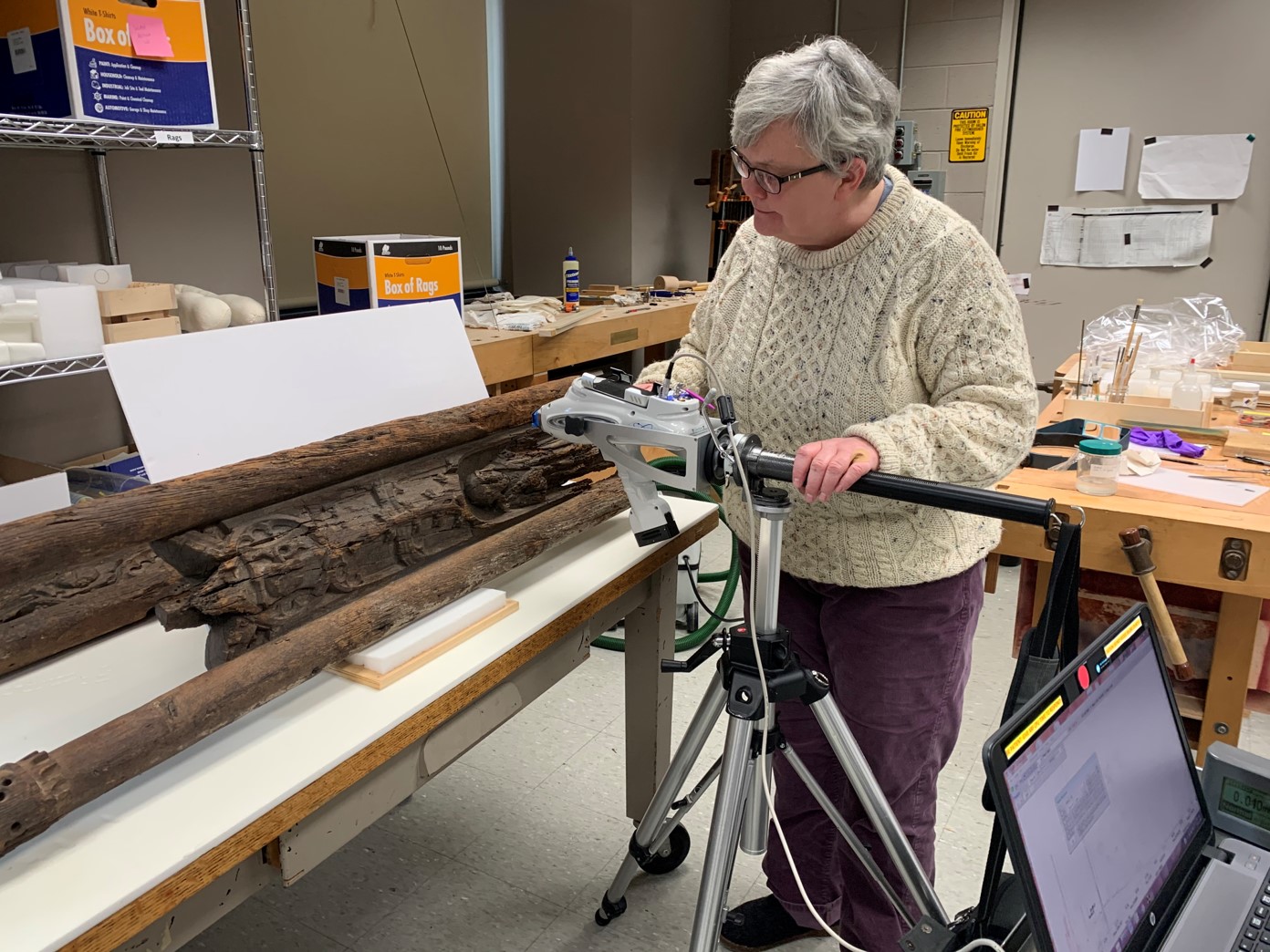Dr. Cathleen “Kate” Duffy ’87

Dr. Cathleen “Kate” Duffy ’87
Chemistry Research and Conservation Scientist Philadelphia Museum of Art; https://www.philamuseum.org/
Graduation Year
1987
Tell us why you chose to attend Hood? Was there a moment when you knew Hood was where you wanted to spend your next four years?
I knew that I wanted to attend a small college, and in particular a women’s college. I was a shy student in high school and felt that a small, supportive community would strengthen my education. In the fall of my senior year of high school, a representative from Hood visited and explained the academics and the close-knit environment offered. I traveled to Hood for an overnight stay and immediately felt at home- it was obviously the right place for me.
When did you decide to major in chemistry? Did you have a specific career path or goal in mind when you chose this discipline?
I entered Hood as a biology major, pre-vet. My dream was to live in the country surrounded by animals. My freshman year allowed me to take not only chemistry and biology classes, but also to explore religion, literature, music, art, and history classes. And this is the powerful education you receive in a liberal arts college. You’ll work on your foundation classes, but you also experience a myriad of subjects which will offer the liberal arts graduate a breadth and depth of knowledge.
Was there a professor at Hood who you would identify as a mentor? How did this person’s influence affect your decisions pre- and post- graduation?
I met John Stadlbauer in my second semester of my freshman year. John was the analytical professor in the chemistry department, and we would often discuss analytical instrumentation and how it could be applied to different subjects (art, for instance). He became my advisor in my sophomore year, I switched my major to chemistry – and pursued the path of analytical chemistry for my career (YAY analytical chemistry!!!).
Tell us about your current position; what is the workday like for a Research and Conservation Scientist at the Philadelphia Museum of Art. How has the pandemic affected your work strategies and methods?
There are six departments in the Conservation Division at the Philadelphia Museum of Art, and I am in the Scientific Research Department. I am responsible for the maintenance and day to day operations of all of the analytical equipment owned by the PMA including: x-ray fluorescence spectrometer, the Raman spectrometer, the scanning electron microscope, the Fourier transform infrared spectrometer, and the gas chromatograph-mass spectrometer. The conservators, responsible for the health and well-being of the artwork, oftentimes will ask me materials question concerning the make-up of the paintings or the objects, or the corrosion layer, or the restoration layer. I’ll then choose the best instrument to answer the question, analyze the sample, and then interpret the data and put the results into context.
Like other cultural institutions around the world, the PMA was closed for several months due to the pandemic. The staff returned to the building mid-summer and the museum just recently opened to the public. Everyone is wearing a mask and maintaining proper social distancing. It was good to get back in the lab!
You started your career as an intern at the Museum of Fine Arts in Boston; what was your favorite project and why?
After graduation, I was working in a chemistry laboratory. At lunch one day, I was reading Chemical and Engineering news, a weekly magazine for members of the American Chemical Society. I was particularly interested in the classified section in the back of C&E news; there was an advertisement for an internship at the Museum of Fine Arts in Boston working with the scientist on staff. I am from Boston and the two cultural institutions my father brought me to consistently were Fenway Park and the MFA. I applied and was thrilled to get the position.
I worked on smaller projects and with a team on larger projects. One of these projects was the materials identification of the grasshopper weathervane, found atop Faneuil Hall marketplace. The grasshopper weathervane was long considered a symbol of successful commerce in Britain; the Boston weathervane was made by Shem Drowne in the early/mid part of the eighteenth century. Out task was to identify the decorative elements as well as to determine its structural integrity. We took an x-ray of the weathervane (not unlike an x-ray of a human bone) and what we saw was fascinating. Inside the belly of the grasshopper was what looked like a squished coffee can with opaque discs inside of it. It was, in fact, a time capsule, inserted into the weathervane by its makers’ son in the mid-1700s and entitled “Food for the Grasshopper.” Throughout its lifetime mayors of Boston would insert mementos for the capsule memorializing historical and special events. The opaque discs were coinage inserted into the time capsule by Mayor Kevin White to commemorate the bicentennial in 1976. It was a treat (to say the least!) to be help analyze one of your hometown treasures!
Lastly, what advice would you give current Hood chemistry majors who wanted to pursue careers in the field of art preservation and conservation?
Explore as many subjects as your schedule can fit especially art, art history, and history. Making your own art will also help develop manual dexterity which is needed for these positions. Since a PhD is now required to work as a scientist in many of the major Metropolitan Museums, graduate school will be in your future. Technician posts are often advertised in Museum Conservation departments- it might be a good idea to apply for one of these positions. I think it prudent to experience the field before committing to graduate school. Also, contact the scientists in the major museums, they can offer advice.
Are you ready to say Hello?
Choose a Pathway
Information will vary based on program level. Select a path to find the information you're looking for!
